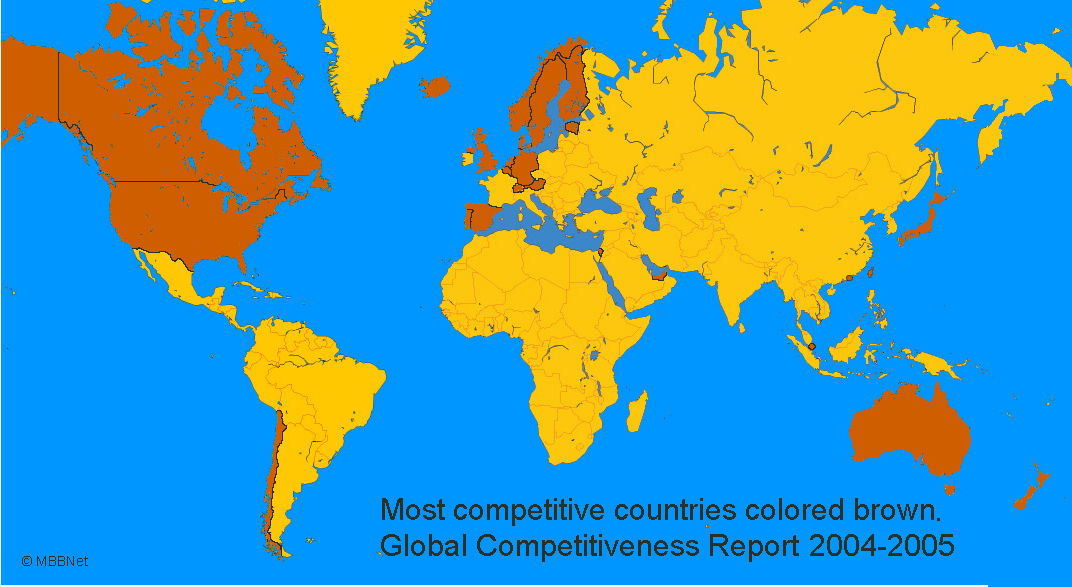
Countries colored in brown rank highly in the Growth Competitiveness Index 2004 - 2005, World Economic Forum.

Countries colored in brown rank highly in the Growth Competitiveness Index 2004 - 2005, World Economic Forum.
|
Finland - 1 United States - 2 Sweden - 3 Taiwan - 4 Denmark - 5 |
Norway - 6 Singapore - 7 Switzerland - 8 Japan - 9 Iceland - 10 |
United Kingdom - 11 The Netherlands - 12 Germany - 13 Australia - 14 Canada - 15 |
United Arab Emirates - 16 Austria - 17 New Zealand - 18 Israel - 19 Estonia - 20 |
Hong Kong - 21 Chile - 22 Spain - 23 Portugal - 24 Belgium - 25 |
Map Explanation
Source: Executive Summary, Global Competitiveness Report 2004-2005.
The Global Competitiveness Index (GCI) is founded on three central ideas.
The first
idea is that the process of economic growth can be analyzed
within three important broad categories: the macroeconomic
environment, the quality of public institutions,
and technology.
The second idea underlying the GCI is that, although
technological advance is the ultimate source of growth, its
origin may be different across countries. In particular, for
economies that are already close to the technological frontier,
innovation is the main source of technological
improvements.
The third central idea underlying the GCI is that the
importance of the factors of economic competitiveness
varies for core and non-core innovators. Getting the
fundamentals right in terms of the macroeconomic environment
and institutions is still extremely critical for the
non-core innovators, whereas core innovators will have
these fundamentals largely in place, and for them technological
innovation has become the deciding factor for
growth. Along these lines, the GCI assigns a larger weight
to the technology index for core innovators than it does
to the public institutions index and the macroeconomic
environment index.
Map is a Mercator projection that exaggerates the size of areas far from the equator.
Maps created with GMT software
William Hoffman - hoffm003@umn.edu
Updated 1/1/07